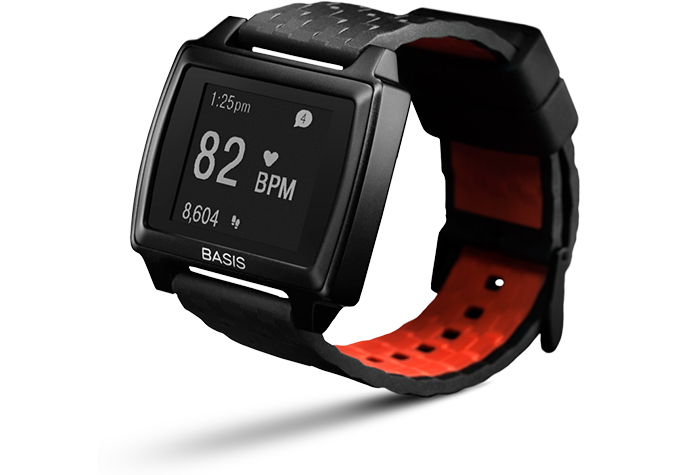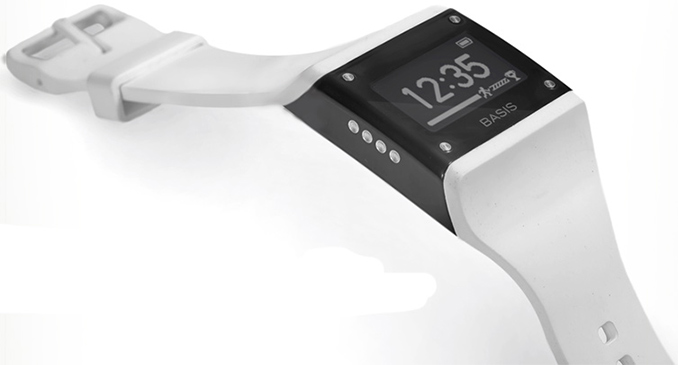Intel Shuts Down New Devices Group: No More Intel-Made Wearables
by Anton Shilov on April 20, 2018 11:00 AM EST- Posted in
- Wearables
- Peripherals
- Intel
- Atom
- Basis

Intel this week confirmed that it had decided to close down its New Devices Group, which developed various wearable electronics, such as smartwatches, health/fitness monitors, smart/AR glasses and so on. The group was created five years ago by then-incoming CEO Bryan Krzanich, who wanted to ensure that Intel’s chips would be inside millions of emerging devices. While wearables have become relatively popular, their propagation is far below that of smartphones. Meanwhile, wearables made by Intel have never been among the market's bestsellers. Thus, the chip giant is pulling the plug.
Over the five-year history of NDG, Intel made two significant acquisitions to bring necessary expertise to the group: the company took over Basis (a maker of fitness watches) in 2014 and Recon (a maker of wearable heads-up displays) in 2015. Most recently, Intel’s NDG showcased their Vaunt (aka Superlight) smart glasses that looked like “normal” glasses, yet used laser beams to project information to retina justifying their “smart” moniker. While NDG had cutting edge technologies, the group has never managed to produce a truly popular product. Moreover, when problems with one of their Basis smart watches showed up on a limited number of devices, Intel preferred to stop their sales and refund their costs to the customers rather than fix the problems and replace faulty units.
In the second half of 2015, Intel folded the New Devices Group into the New Technology Group, which was a signal that the company was hardly satisfied with NGD’s performance. Since then, we have seen multiple reports about layoffs in Intel’s NGD and have hear multiple rumors to axe the unit. Because making actual devices is generally unnatural for Intel, it was a matter of time brefore the chip giant was to pull the plug, so apparently it decided to do so this month.
Since Intel’s New Technology Group remains in place, all of Intel’s ongoing research projects for smart devices remain intact. More importantly, other Intel’s divisions continue to work on their products for wearables and ultra-low-power devices that will become widespread in the looming 5G era. The only products that are not going to see the light of day are those designed by Intel’s New Devices Group (e.g., the Vaunt glasses). Considering the fact that neither of NDG’s products has become popular, it is unclear whether those products are going to be missed.
It is noteworthy that Intel canned their Galileo, Joule, and Edison product lines aimed at the Internet-of-Things last Summer.
Related Reading:
Source: CNBC











55 Comments
View All Comments
mode_13h - Sunday, April 22, 2018 - link
IoT will happen. It's just going to take some time for standards, security issues, power issues, and costs to sort out.Watches are the natural place to start, but perhaps the bigger market is medical implants and prosthetics.
FunBunny2 - Sunday, April 22, 2018 - link
"IoT will happen."well, how many really nasty hacks have already happened on IoT just because there's no such thing as a really secure innterTubes? or ISA (meltdown, etc.)? or OS? it's the wild, wild west where everybody needs a gun just to walk down the street.
there's a reason the CIA/NSA/MI6/Agent 99 were able to destroy centrifuges. and that was years ago.
mode_13h - Sunday, April 22, 2018 - link
Be contrarian, if you want. I don't own any IoT devices, but I still think it'll happen. Just a bit slower than some people have assumed.Gadgety - Friday, April 20, 2018 - link
TAG Heuer and Hublot will have to look elsewhere... Qualcomm's the only one now?eastcoast_pete - Friday, April 20, 2018 - link
Intel needs to make a strong effort to hang on to their core business, and that will require focus and investment. Today reminds me of the time they got caught napping and the rude awakening the first Opteron/Athlon chips from AMD gave them, especially once AMD introduced x64 and dual core chips. Right now, Apple will likely move to in-house chips for their MacBooks within 18 months, and the Windows side is under threat by AMD on servers and desktops (EPYC, Ryzen) and ARM-derived designs for ultralight laptops and 2-in-1s (e.g. the WIN 10 on Snapdragon project by Qualcomm and MS). Intel needs a successor to the Core arch ASAP, or it's sales will shrink a lot.FunBunny2 - Friday, April 20, 2018 - link
"that will require focus and investment."in what, exactly? we're a few years from the end of node shrink. don't tell me about quantum computing. won't happen for deterministic applications, which are 99.9999999%. there's only one periodic table, not yet patented, so that's on the flat line of the asymptote of progress; not much to mine there. software? not much change since C. and so on. engineering is another matter. 99.44% of the devices you have today are based on basic science from decades ago.
fteoath64 - Saturday, April 21, 2018 - link
New stuff, of course!. Like AI chips ?!!!. TensorFlow co-processors of various types, Fpga variants, the one XilinX cooked up, Everest is particularly juicy. Something along that line. And a decent "Home" server which is still non-existent. I mean one that can backup and re-categorize photos, videos,music for mutiple phones, tablets, etc.Also in VR, Intel cannot do a SnapDragon 845 equivalent ?. Have they been sleeping ?. PVR was not a bad GPU partner in mobile,can't they evolve Atom much much further internally ?. There are lots of areas but Intel hardly touch any of them!. What gives ?.
mode_13h - Saturday, April 21, 2018 - link
Well, they recently created a new graphics group.mode_13h - Saturday, April 21, 2018 - link
Still not clear how much of that is graphics vs. GPU computing, however.HStewart - Friday, April 20, 2018 - link
Windows 10 on Snapdragon - is DOA. And Apple on in-house chip is a pipe dream of Apple - has the iPad Pro become a PC replacement - maybe for some people who only need email and internet like my sister.Just go into a local Best Buy and count the Intel vs AMD and you see the real state of AMD. as for arm tablets -yes they are out there - but even Samsung when Intel on their tablet.